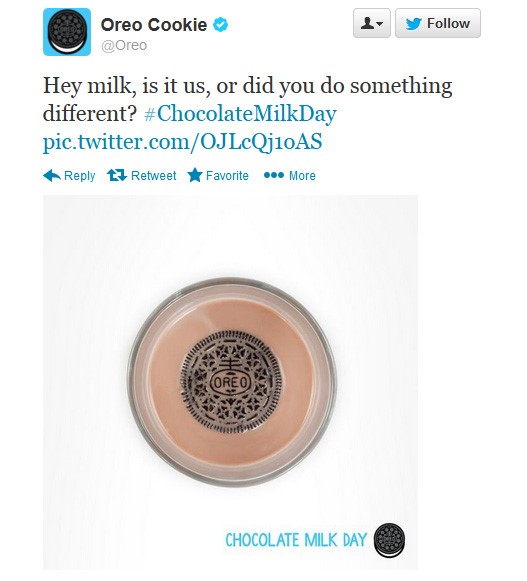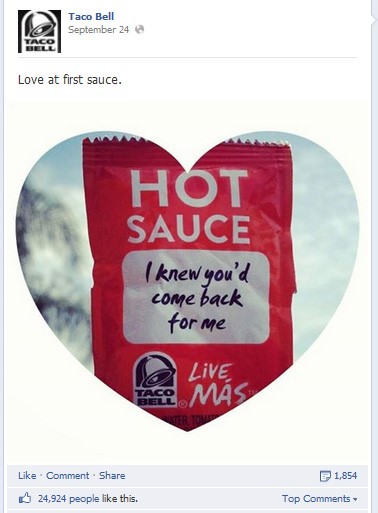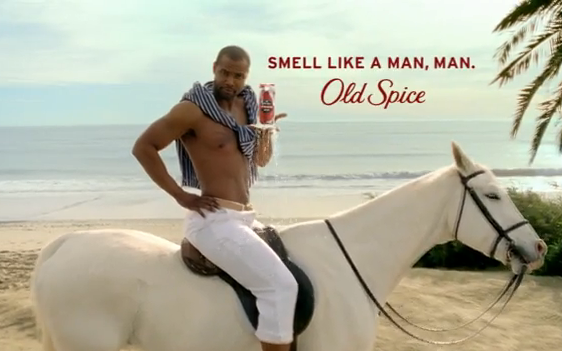It’s increasingly common now to see companies using social media to show the lighter side of their brand. Humor is one of the best ways to get people’s attention and to get potential customers talking about your product. A quick look at Unruly Media’s top viral videos of 2013 shows that at least half use humor to get audiences clicking on the ‘share’ button (well, that and David Beckham’s abs).
The Nielsen Global Survey of Trust in Advertising polled more than 29,000 Internet respondents in 58 countries to measure consumer sentiment on 19 forms of paid, earned and owned advertising formats. 47% of global respondents agreed that humorous ads resonated most.
Let’s take a look at some of the successful ways humor has been used by brands across social media channels to connect with audiences, boost awareness, sell new products, and improve customer service.
Some brands have no problems being funny in 140 characters. Oreo Cookie’s Twitter feed isn’t so much about deep and meaningful interaction as it is about entertaining followers with cookie-related jokes and topical musings. With over 180,000 followers, that’s a lot of love for the comical cookie.

How does a fast food restaurant get 10 million Likes? Taco Bell’s quirky updates and humorous photos have given them a lively and engaged Facebook community eager to share their posts with friends. The company is great at mixing up off-beat comments with amusing images – and it’s a recipe that goes down well with their fans.

Southwest Airlines is renowned for its fun approach to flying, and it’s its ethos that filters through the company’s social media channels. Their Pinterest page has boards for ‘Plane Party Ideas’, ‘Baked with LUV’ plane-themed cakes, and ‘Just PLANE Fun Crafts and Such’. If you need to know how to carve a plane on a pumpkin this year, or else make aviation themed seat placement cards, then Southwest’s page is the place for you. With over 15,000 fans, this airline knows what flies with pinners.
YouTube
The phenomenon of the viral video has been the Holy Grail to 21st-century marketers keen to make their company heard above the buzz of competing noise. The idea that people would actively seek out and share commercials is so appealing that many marketers are turning to humor as a way to ensure online interaction. Old Spice’s You Tube channel has over 370,000 subscribers because of the sustained quality and sheer entertainment of their output. One hilarious video, ‘The Man Your Man Could Smell Like’, has had a staggering 46 million views.
Vine
Volkswagen have been making the most of their sponsorship of Shark Week for comic effect on video-looping app Vine. A graffiti shark swims around a wall behind a Beetle convertible… before looming out and swallowing it whole. It’s brilliantly made and went crazy across social media. Are you sure you want to go back in the water?

No laughing matter
Humor has been successfully used by brands across all industries to engage audiences and boost sales. But remember that just because something is funny doesn’t mean it hasn’t been carefully thought out and planned. Too many companies have found that flippant Tweets have backfired, or that a joke was in bad taste and had to be hastily pulled. There’s a fine line between edgy and crass, and what seems to be off-the-cuff humor may have been crafted by experts to get exactly the right tone. If in doubt, hire professionals to do the job for you.
The best brands blend humor into their digital ‘voice’, which gives a sense of consistency to their output. Not all posts have to be funny, but you should try to stick to a similar type of humor – followers who expect a family-friendly tone won’t appreciate it if you start putting out risqué material. As always, think about your audience and craft your posts to suit them, whether you are trying to reach a B2B demographic, younger urban consumers, or families. Even the most serious of brands can use social media for a slightly lighter touch, as long as it’s appropriate – it’s a great environment for showing off a more informal side to your company.
Originally posted in Fast Company

